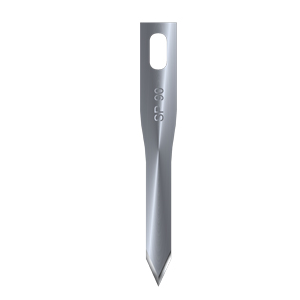Hair transplant slit blades
Slits and designing recipient sites is a part of hair transplantation that is sometimes disregarded. The method that minimizes vascular damage while offering the best coverage is also a topic of discussion. The objective of this work is to present a rationale for selecting the best tool and slitting technique to achieve maximum density, maximum survival, least pop-out, and least harm to scalp blood flow.
Compared to rectangular blades and needles, the use of semiconical blades reduces injury to the dermis and vascular plexus since a less depth of penetration is needed. Using an acute angle lessens harm to the deep plexus and lowers the depth of penetration for a given incision length. Compared to sagittal slits with the same size blades, coronal slits cause less damage to blood vessels.
Prepared slit generation is typically preferred due to its efficiency and the possibility of assigning a large portion of the surgery (implantation in prepared slits) to helpers, especially in high-volume centres. There are several techniques for cutting slits. Needles and blades are the most often utilized tools, whether for a single or multiple slit production.
Both coronal and sagittal orientations are possible. There is also variation in the slit's depth and angle. Nevertheless, no analysis has been done on the actual mechanics of slit generation with either of these methods. Regarding which method minimizes vascular damage while offering the best coverage, there is considerable disagreement.
The two main variables that affect transplant survival are scalp vascularity and graft viability. Better graft survival is ensured by increased scalp vascularity. The purpose of this work is to present rational justifications for selecting the best tool and slitting technique to achieve maximum density, maximum survival, least pop-out, and least harm to scalp vascularity.
Challenges facing present techniques and an analysis of earlier research
One of the most important steps in the hair transplant process is setting up recipient sites. With transplanted hair growing in a way that resembles natural hair, the goal of hair transplantation is to achieve an undetectable result. Critical time is lost during the creation of recipient sites, affecting the grafts' out-of-body time.
It also takes longer and requires more effort to create recipient sites in thinning areas. In the process, it's important to preserve the direction, angle, and depth in addition to avoiding harming the existing follicles. In the past, recipient-site creation—which takes around 60 to 90 minutes for 3000 slits—was accomplished using a variety of tools, including hypodermic needles, chisel blades, and cut-to-size blades.
In order to provide the best possible nourishment and oxygenation for the harvested grafts, it was important to ensure that they fit snugly in these locations while also preventing any obvious surface imperfections in the transplanted region. It takes a lot of effort and time for a surgeon to create thousands of recipient sites, and in order to maximize the angulations, direction, and spacing of these sites, the surgeon must pay close attention to detail.
A perfect slitting tool would have as few moving parts as possible to reduce the chance of malfunction during use, be disposable and reasonably priced to account for inevitable blunting with use, and be easy to sanitize. It should also have a customized depth control mechanism based on each patient's unique follicular graft length.
The Anatomy of the Vascular Scalp
The superficially temporal, superior auricular, supranational, supra-orbital, and temporal vessels are the principal blood vessels supplying the scalp. These create a complex web that resembles a deep plexus of vessels. A superficial sub-papillary plexus is connected to the vertical connecting vessels that emerge from this plexus. The dermal papilla receives capillary loops from the superficial plexus.
A huge region of skin is supplied by the big vessels that make up the deep plexus. Damage to this area can lead to both necrosis and ischemia, which can negatively impact the outcome. Because of this, it is crucial to avoid injuring the deep plexus when creating slits. In other words, our slits shouldn't go too deep to harm anything.
The necessary slit depth needs to be somewhat less than the graft's depth. Deep incisions may result in the graft being buried, which might induce folliculitis. Cobble stone stoning and popping out can result from extremely shallow cuts. With this knowledge, we will examine the many aspects of slit formation to determine what would result in the least amount of vascularity damage and guarantee the highest possible graft longevity.
Form of the Instrument
Incision length overlooks the three-dimensional aspect of vascularity; incision volume, on the other hand, is a more relevant element in assessing vascular damage. Incision volume is influenced by the form of the instrument. To provide appropriate accommodation and prevent needless vascular injury, the slit's form should resemble that of the transplant. Generally speaking, a graft is cylinder-shaped with some splay at the bottom, close to the roots. The skin's flexibility is attributed to a larger concentration of collagen and elastin fibers in the upper dermis. This area of skin determines the slit's suppleness.
The needle's bevel consists of an inner and an outer edge. Penetration is aided by the needle's lower, conical bevel. Cutting occurs at the outside edges until it begins to curve inside; after that, more dilatation than cutting occurs as the needle enters inward. The slit made by the needle will be wider than it is wide, but in the upper dermis, fewer collagen and elastin fibers will be cut, helping to preserve superior elasticity and a lower pop-out rate.
The bottom end of the graft cannot be accommodated by the tiny slot that the conical portion of the bevel creates. Because of this, the needle must go deeper, needlessly damaging nearby blood vessels. If this is not done, the graft may come out of the upper portion of the slit and result in cobble stoning.
Additional types of needles:
There are more three types of needle used in this process.
- Rectangular Blades: In contrast, a straight edge blade requires less penetration at its lower end to fit the graft, resulting in less injury to the blood vessels. It also removes more fibers from the higher dermis.
- Conical Blades: To make the necessary size incision, they must pierce farther (similar to a needle). Furthermore, it causes more fibers in the top section to be cut, increasing the pop-out rate.
- Semi-conical Blades: The blunt tapering sides of a semi conical knife dilate more than they cut as it penetrates deeper. The knives thin cutting edge at the bottom slices the whole slit. Therefore, there is less fiber damage in the upper portion of the slit, which will lower the pop-out rate. Additionally, a slit of the ideal size requires less penetration depth, which lessens vascular injury. Additionally, compared to a rectangular knife, the vascularity is less damaged by the thin lower portion of the knife. The top dermis will aid in keeping the graft in place, while the lower dermis and hypodermis, which have fewer collagen and elastin fibers, will readily accept the bottom part of the transplant.
Slit Position: Sagittal vs. Coronal
Whether the slit's surface orientation is coronal or sagittal is the next thing to take into account while creating a slit. There is a historical argument over coronal versus sagittal. Making coronal slits was suggested as a superior method to provide grafted hairs a better orientation with regard to light reflection, improving the appearance. Nonetheless, many people favored the sagittal slit since it was seen to be more natural and less prone to cause vascular interference.
The surface incision and whether it is the same as the instrument's breadth are two more factors we would want to take into account. Blade width and slit angle in sagittal slits are aligned along the same axis. Thus, in accordance with the equation above, the length of the surface incision changes as the slit's angle changes.



